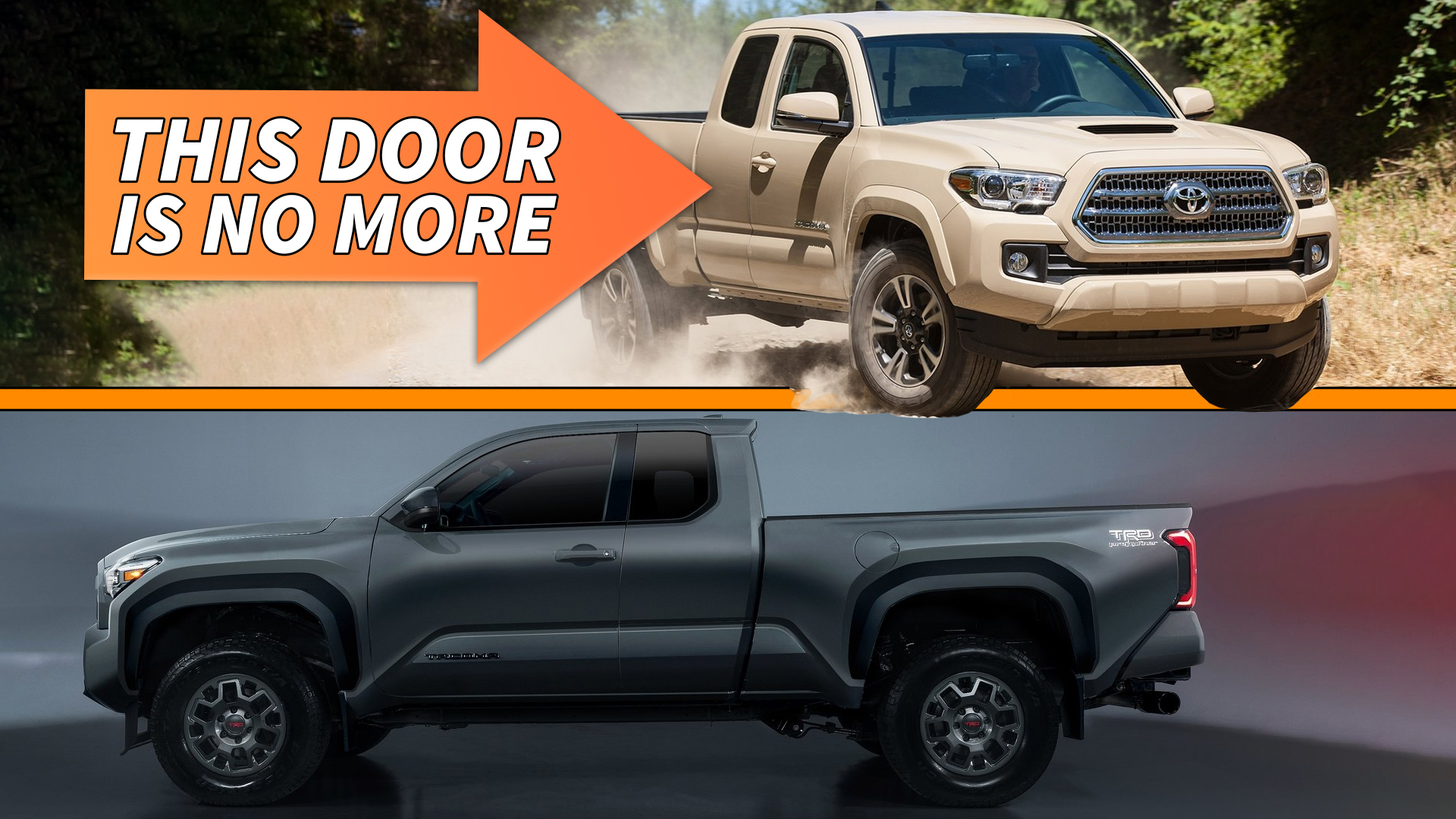

The 2024 Toyota Tacoma is gaining a lot of options over the current truck, but it’s also losing something: the reverse-opening back doors on extended cab models. In fact, the extended cab—or Access Cab in Toyota parlance—has been replaced by a two-door that’s kind of in between a traditional extended cab configuration and a classic single cab. Around a campfire at Overland Expo, Toyota’s people talked a bit about why.
Tacoma Chief Engineer Sheldon Brown recounted the development days of the new Taco we’re now all familiar with. “In 2019 is when we’re really getting after it, and we’re pulling it together, thinking ‘What is this truck going to be, what are the dimensions, how does that fit, what’s the package, the business case, the technical, high-level standards’ … just to frame the timeframe. …and here are … competitors back in the segment [return of the Ford Ranger], we’re seeing new entries into the segment [enter Rivian R1T] … the [midsize truck] segment isn’t shrinking, it’s growing. But all that growth is happening in what we call the Double Cab; the four-door version.”
Brown added a little more casual context I’ll paraphrase. Between 2017 and 2022, extended-cab mid-sized trucks were selling at about 100,000 units a year, of which Toyota had about 34 percent market share. Again, this is napkin math, but probably close coming from the Tacoma’s chief engineer. More significantly, he followed up by saying:
“We looked a little deeper and we saw that 50% of that 34,000 units, people are ordering rear-seat deletes. People aren’t carrying people, they’re carrying things. Stuff. Gear. So we said ‘Hmm, is there a better way to do this?’ Because to be perfectly candid, as we continue to look at side-impact and crashworthiness, it requires a lot to put the suicide doors in. We have to put in a lot of investment and we saw that market shrinking.
“So we thought ‘How can we rethink this? We still want to have an alternative’ (to a full four-door).”
Brown basically confirmed what most industry observers would guess—the automaker didn’t want to build variants of the truck it couldn’t make a lot of money on. And four-door, short-bed trucks are what move quickly off dealer lots. In revisiting my notes from the presentation, I’m realizing there was no mention whatsoever of a true, short single cab being on the table at all, which is kind of funny albeit unsurprising.



Designer Ben Jimenez was also at this talk and he added his perspective:
“I remember a lot of difficult decisions, a lot of pushback! Looks easy now, but there was a ton of pushback about that because it’s different. It changes things. I remember one particular meeting, where we’re all looking at a side view package of this … extra cab construction, and the sales team turned to us and said ‘OK, but we have to give it a new value. It can’t just be taking something away. It has to be something more.’ And the design team went back and forth with the engineering team.”
In other words, it took a lot of thought and cross-department collaboration to come up with a short-cab Tacoma configuration that would be cool enough to sell and have a legitimate value proposition. That’s how the new two-door Taco ended up with trick features like a passenger seat that folds down into a desk, dedicated tie-downs, laptop storage, room for a cooler behind the front seats, and so on.
“It’s interesting to look at it now and see the result of it, but really it comes from a lot of hard work, and a lot of inspiration, and a lot of thinking through things—designers, engineers, and sales [people] really talking through how people are going to use it,” Jimenez said.
Adam Rabinowitz, a Toyota designer who worked on the Tacoma’s exterior, added critically, “We didn’t want it to look like the customer was missing something.” Indeed, it would have been a pretty interesting challenge to draw this new cab idea, not quite a single-cab but not quite an extended cab, in a manufacturing-friendly way that looks good.
From a user’s perspective I think a rear-opening door to allow for easier cargo access would be great, but as Toyota’s team said, getting rid of that was an important part of crashworthiness compliance and cost reduction. That said, I think the new two-door design does look pretty sweet and I’m excited to see how people mod these when they hit the streets. And now you’ve got some context for how it came to be, and why it looks the way it does.